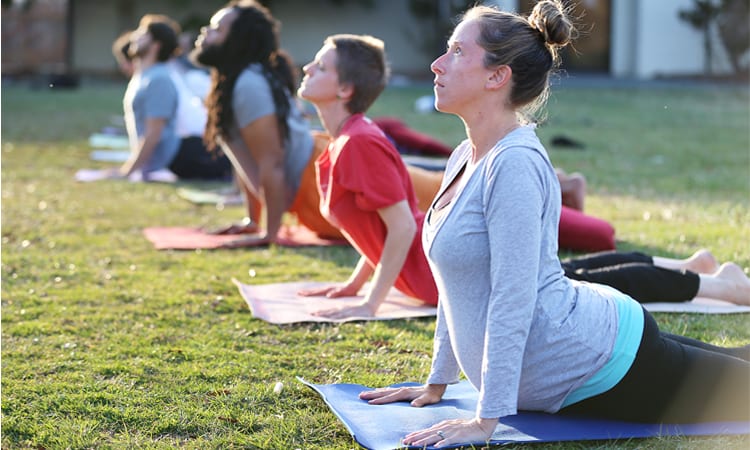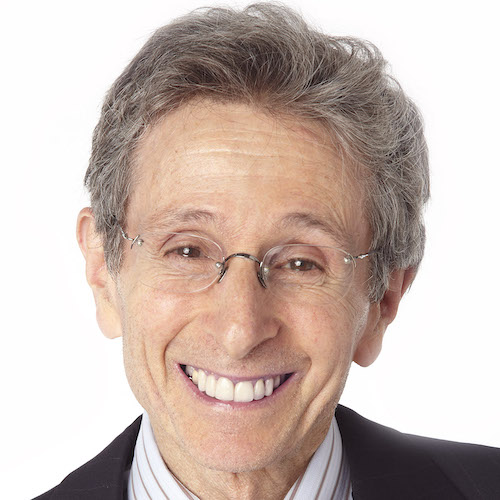 Physical injuries or complaints are often what motivate people to seek a Yoga practice for their health and wellbeing. A common, yet unfortunate, physical ailment for many is back pain. With respect to back pain, Dr. Loren Fishman, a back-pain specialist and diagnostician, shared ten rules that he has gathered from over two decades of medical and rehabilitative practice.
Physical injuries or complaints are often what motivate people to seek a Yoga practice for their health and wellbeing. A common, yet unfortunate, physical ailment for many is back pain. With respect to back pain, Dr. Loren Fishman, a back-pain specialist and diagnostician, shared ten rules that he has gathered from over two decades of medical and rehabilitative practice.
The 10 Commandments of Back Pain
Twenty years of treating people whose backs ache, trying to help thousands find its cause and deal with its crippling challenges, I have developed my own set of ideas for what to do when your back hurts, when you have a pain in the butt, or when nasty sensations radiate down your leg. While some physicians think back problems are mostly psychological, I believe in a practical, diagnosis-based approach. To avoid back pain Hell and wandering from clinician to clinician, these are the rules to follow.
You Will Get Back Pain
Like the common cold, back pain will hit you at some point another, so don’t panic. According to the National Institutes of Health, in a three-month period, about one-fourth of U.S. adults experience at least one day of back pain. It is one of our society’s most common medical problems. My patients who are over forty are more likely to have back pain than the younger ones and those who weigh more are at more risk than thinner ones. Cigarette smoking, excessive consumption of carbonated beverages, jobs that involve lifting heavy objects, being sedentary or exercising too much, all these are risk factors.
Rest And Exercise
Too much rest or too much exercise can make your backache worse, so do both in moderation. Reduce your activity to about 40 percent of what you usually do, and that applies to the gym as well. When lying down, a pillow or pillows under your knees may do wonders.
Take Non-Steroidals And Other Generic Treatments
Non-steroidal anti-inflammatories, such as Advil, can help with pain and reduce swelling inside the spine, so they may be beneficial. Remember that generic treatments such as muscle relaxants, heat, and massage may provide relief but not a cure if you have something besides garden-variety musculoskeletal pain.
Take Notes
Observe your pain so that you can report it accurately to your physician. Did your pain begin at a particular moment; is it associated with an event? It may be important if it hurts more when you’re lying down, when you’re walking, or after sitting. Does it go down your leg? Can you recognize any pattern?
Get A Diagnosis
When pain is very severe, if you have weakness or numbness, or if pain goes on for more than 10 days, go to your physician. A specific diagnosis is imperative. Without it, there can be no rational treatment. In addition to a thorough physical exam, you may need an X-Ray, an MRI, or, if the pain goes down the leg, an EMG to measure nerve conduction. Remember to bring your notes to the appointment. Some of my patients have seen several doctors without getting a true diagnosis and some have received treatments for conditions they do not have. Persist until you have the correct diagnosis, and get a second opinion if necessary.
Don’t Underestimate The Value Of Physical Therapy
If your doctor prescribes physical therapy, take it seriously. Physical therapy two or three times a week for pain of musculoskeletal origin or for conditions like herniated disc and spondylolythesis can not only speed recovery, but can also prevent a relapse. You must go regularly for it to work, and you will likely be given home exercises. In my opinion, McKenzie and Maitland PT techniques are best for most herniated discs.
Do Hatha Yoga
Yoga is far more likely to help if you have a diagnosis. Back bends are good for a herniated disc, forward bends are good if you have stenosis, and twists are helpful for piriformis syndrome. For musculoskeletal problems, (e.g., a sprained back) sitting forward bends and twists are good. There are more postures and advice in my book, Cure Back Pain With Yoga, published by WW Norton. If you go to a class, be sure to tell your teacher where and how it hurts so that you can be given poses that will help and stay away from those that could make things worse.
Get Acupuncture
While research is conflicting, my patients report that acupuncture helps when done by a skilled practitioner. Physicians who use acupuncture are covered by insurance. Some doctors combine acupuncture with trigger point injections, which produces good results.
Try Alexander Technique
My patients tell me that this alternative therapy works wonders for back pain—both chronic and acute. A teacher helps the student with posture, body awareness and movement habits that may contribute to physical difficulties. This gentle educational system encourages students to alter the body’s automatic responses and movements to relieve pain.
Consent To Surgery If…
As a specialist in Physical Medicine and Rehabilitation, I work hard to keep my patients out of surgery. However, under the right conditions, when the diagnosis makes a patient an appropriate candidate—as with a herniated disc that does not respond to conservative treatment—surgery can be miraculous. Do not go to surgery without a second opinion.
This article was originally published online by Huffington Post.com.

